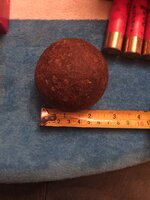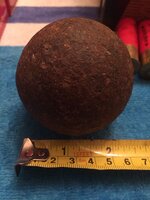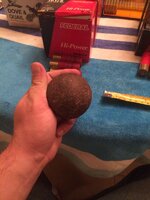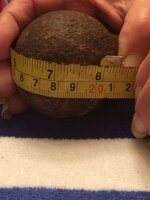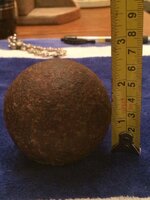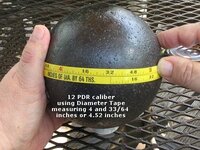coinhound1983
Sr. Member
- Aug 22, 2012
- 349
- 138
My brother found this about 3ft down in the silt line along a lake in south east Louisiana . I'm not sure if it's a cannonball or just a ball bearing.. There are no distinguishing marks and no holes. Solid iron it looks like. I can weigh it as well if need be.. Think I may need cannonball guy on this 1.


